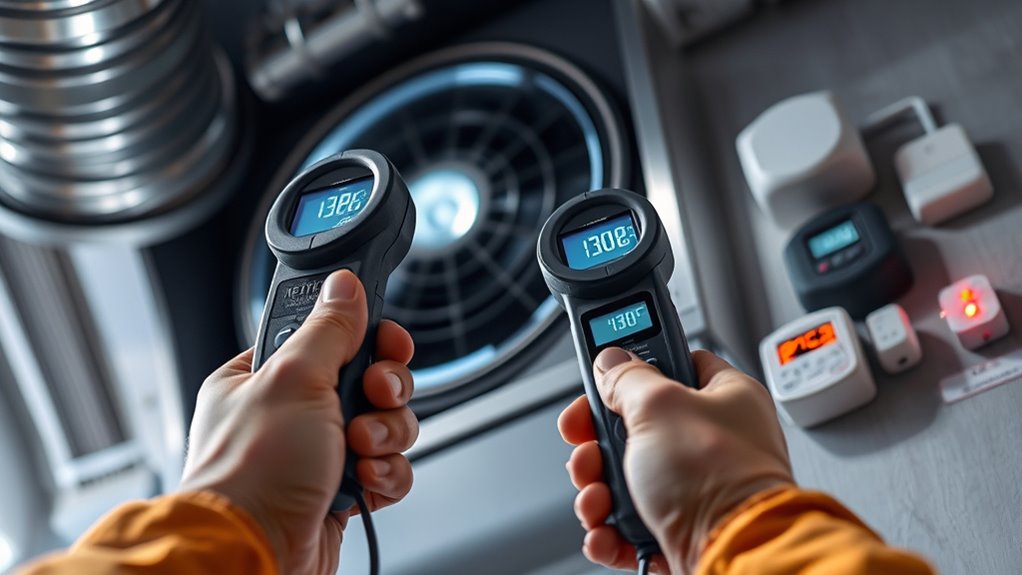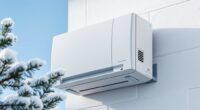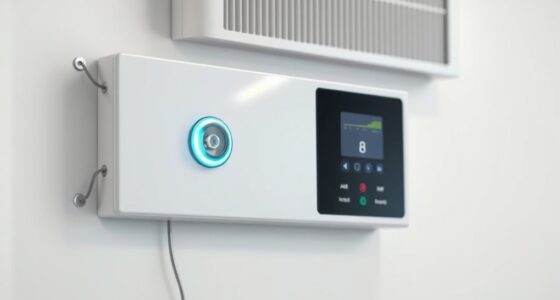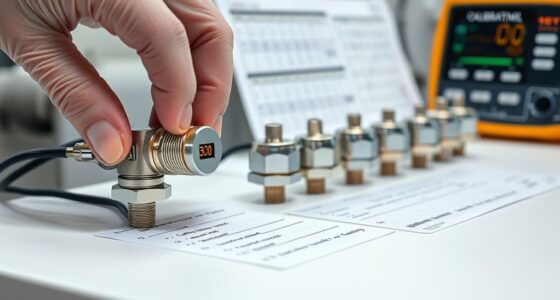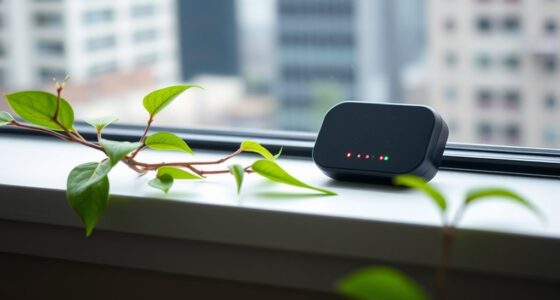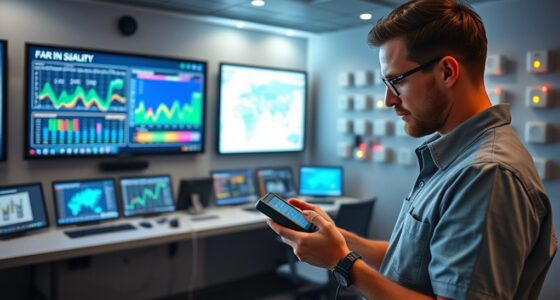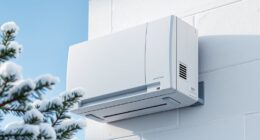To measure airflow with anemometers and IAQ sensors, you need to position the devices at strategic locations to obtain accurate readings. Anemometers, like vane or laser types, help you assess airflow speed, while IAQ sensors evaluate overall air quality. Regular calibration ensures reliable data, allowing you to identify ventilation issues and improve system performance. Keep in mind, proper placement and calibration are key—continue exploring for detailed tips on optimizing airflow measurements.
Key Takeaways
- Use anemometers to measure airflow velocity at different locations for accurate ventilation assessment.
- Incorporate IAQ sensors to evaluate overall indoor air quality alongside airflow measurements.
- Properly calibrate both anemometers and IAQ sensors to ensure reliable and precise data collection.
- Position sensors strategically to visualize airflow patterns and detect turbulence or blockages.
- Analyze combined data to optimize ventilation, improve indoor air quality, and adjust HVAC system performance.

Measuring airflow is vital for ensuring proper ventilation, maintaining indoor air quality, and optimizing HVAC system performance. When you’re evaluating airflow, understanding airflow patterns helps you identify how air moves within a space. This knowledge allows you to pinpoint areas with insufficient ventilation or uneven distribution, which could lead to stale air or uneven temperature regulation. To accurately analyze these patterns, you need reliable tools like anemometers and IAQ sensors, but even the best equipment requires proper calibration to deliver precise measurements. Sensor calibration ensures that your devices provide accurate readings over time, preventing errors that could lead to improper system adjustments.
Accurate airflow measurement depends on properly calibrated tools and understanding airflow patterns for optimal HVAC performance.
In practice, capturing airflow patterns involves placing anemometers at various locations within a room or ductwork. This process helps you visualize how air flows, whether it’s steady, turbulent, or blocked by obstacles. As you gather data, it’s essential to calibrate your sensors regularly, especially if you’re using them over extended periods or in different environments. Calibration involves comparing your sensor readings against a known standard, then adjusting the device to eliminate discrepancies. Proper sensor calibration not only enhances the accuracy of your measurements but also ensures consistency across different sessions and devices, giving you confidence in your data.
Additionally, understanding AI security vulnerabilities can help you implement better safeguards for your measurement systems, especially as more devices incorporate AI technologies. When measuring airflow, you should be mindful of the tools you choose. Anemometers come in various types, such as vane, hot-wire, or laser, each suited for specific situations. For example, a vane anemometer is portable and easy to use for spot measurements, while laser anemometers can measure airflow without contact, ideal for more detailed analysis. Regardless of the type, verifying that your device is calibrated correctly before each use guarantees that the airflow readings you take are trustworthy. This step becomes especially important when troubleshooting ventilation issues or verifying the performance of an HVAC system.
Once you’ve captured airflow data, analyzing the patterns allows you to make informed decisions about adjustments or improvements. Whether it’s repositioning vents, adding fans, or sealing leaks, understanding airflow patterns helps optimize indoor air quality and system efficiency. Remember, consistent sensor calibration and strategic placement of measurement devices are critical to obtaining reliable data. In doing so, you gain a clearer picture of how air moves through your space, enabling you to maintain healthier environments and ensure your HVAC system operates at peak performance.
Frequently Asked Questions
How Often Should Airflow Measurements Be Taken for Accuracy?
You should perform airflow measurements regularly, ideally once a month or after any significant changes to your ventilation system. This measurement frequency helps guarantee data accuracy and identifies any variations that could affect indoor air quality. Consistent monitoring allows you to catch issues early, maintain proper airflow, and optimize ventilation efficiency, ultimately creating a healthier environment. Remember, the more consistent your measurements, the more reliable your data accuracy will be.
Can Anemometers Measure Airflow in Hazardous Environments Safely?
Did you know that anemometers can be safely used in hazardous environments if designed for such conditions? They measure airflow accurately while adhering to safety considerations, like explosion-proof casing and non-sparking parts. Always guarantee you select an anemometer rated for hazardous environments, follow proper safety protocols, and use protective gear. This way, you can monitor airflow effectively without risking safety in dangerous settings.
What Is the Impact of Temperature on Anemometer Readings?
Temperature influence can critically affect anemometer readings, causing inaccuracies if not accounted for. As temperature changes, air density and viscosity shift, impacting the measurement. To guarantee precise results, you should perform calibration adjustments that compensate for temperature variations. Regularly check and adjust your anemometer, especially in environments with fluctuating temperatures, so you maintain reliable airflow measurements and accurate data collection.
How Do IAQ Sensors Differentiate Between Various Airborne Pollutants?
Think of IAQ sensors as skilled detectives, each with a unique fingerprint. They differentiate airborne pollutants by analyzing specific chemical signatures or particles through advanced detection methods like electrochemical, metal oxide, or optical sensors. Proper sensor calibration guarantees accuracy, allowing you to distinguish pollutants such as VOCs, CO2, or particulate matter. This way, you get a clear picture of air quality, helping you identify and address specific indoor air issues efficiently.
Are There Portable Anemometers Suitable for Quick Field Assessments?
Yes, you can find portable anemometers perfect for quick field assessments. These devices are lightweight, easy to carry, and provide instant airflow readings, making them ideal for on-the-spot measurements. Whether you’re checking ventilation efficiency or troubleshooting airflow issues, portable anemometers offer a practical solution. They help you quickly gather accurate data, so you can make informed decisions without the need for bulky equipment or lengthy procedures.
Conclusion
By using anemometers and IAQ sensors, you can accurately measure airflow and guarantee ideal indoor air quality. Some might worry these devices are complicated or costly, but imagine effortlessly detecting drafts or stale air in your home, creating a healthier space. With simple tools in hand, you’ll gain peace of mind, knowing your environment is safe and comfortable. Don’t let airflow issues linger—measure today and breathe easier tomorrow.
